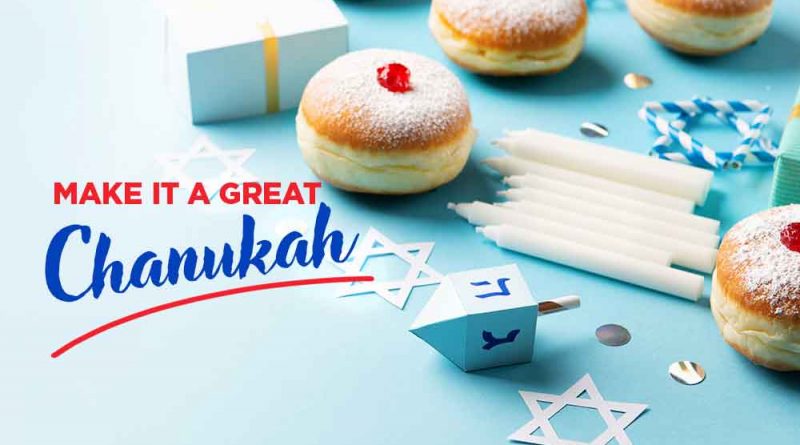Celebrating Chanukah: 8 Days of Hope and Resilience
My favorite holiday of the year is here. With the greatest majority of our readers leading nonprofits, the Chanukah story will hit home for many. It too, relates to working for the greater good and trying to stem the tide of the ills plaguing society.
Chanukah, or Hanukkah, is a Jewish holiday that celebrates both the spiritual and physical victory of a small group of unwavering priestly Jews over a heavily armed Hellenistic-Greek army. Chanukah commemorates the rededication during the second century B.C. of the Second Temple in Jerusalem. The remaining wall of the temple still exists today, as the Western or Wailing Wall.
As with most stories, we have to start at the beginning.
The Beginning of Chanukah
The story of Chanukah begins with the conquest of Judea, the land of the Jews, by the Hellenistic-Greek army led by Antiochus IV. However, it really starts before that, with his father — Antiochus III. Around 200 B.C. (B.C.E.) the Hellenistic-Greek king Antiochus III took control over Judea (another name for Ancient Israel).
At the beginning of his reign, Antiochus III was a benevolent ruler, allowing the Jews to practice their religion peacefully. Toward the end of his rule, however, the Romans defeated Antiochus III and forced him to pay heavy taxes; the gold would come from all the people (under his reign), including those living in Judea.
When Antiochus IV came to power, everything got much worse. Upon his ascension to the throne, he passed laws forcing the Jews to abandon their Jewish faith and assume Hellenistic customs. In 168 B.C.E, Antiochus IV and his army descended upon Jerusalem, massacring thousands.
Fighting Back
A brave Jewish priest named Mattityahu decided to retaliate against the Hellenistic Greeks and defend the Jewish people and their traditions. He led a small group of resistance fighters and their families and ran to the Judean mountains. Hiding in caves in the hills, Mattityahu and his sons engaged in guerilla warfare against the Hellenistic-Greek army, setting fire to encampments and using the veil of night to fight back. While fighting for their survival, they maintained their Jewish customs and Torah learning, even in harsh and dangerous conditions.
The Maccabees Bring The Hammer Down
After about a year of fighting, Mattityahu knew he was close to death, so he appointed his son Yehuda HaMaccabee, as the leader of the Jewish people. Yehuda would form a band of fighters known as the Maccabees. He recruited 7,000 in this effort. When Antiochus sent his generals and armed forces to wipe out this group of resistance fighters, something incredible happened: the Hellenistic-Greek army lost the war. Forty thousand soldiers could not hold off 7,000.
The Maccabees would continue to be successful in their battles against the Hellenistic Greeks. After reclaiming Jerusalem, the Maccabees entered the Holy Temple in Jerusalem only to find it utterly desecrated and neglected.
They were not deterred, and cleared the sanctuary of idols and debris, built a new altar, and dedicated it in 139 B.C.E.
After the desecration of the Temple, there remained only one small jug of pure olive oil that would not last more than a few hours of a day. With the destruction, retrieving more pure olive oil would take another seven days.
Yehuda HaMaccabee chose to light the Menorah anyway, and the small jug of pure olive oil lasted eight days. This would be considered one of many of the miracles of Chanukah.
So How Do We Celebrate?
In honor of the oil lasting eight days, the Jewish people light the Menorah during Hanukkah, eat foods fried in olive oil, and rejoice and celebrate their people’s survival and perseverance.
I laughed when I heard this last night at a Chanukah celebration, “We fought, We won, Let’s eat!”
The Chanukah tradition of fried foods is why we eat everybody’s favorite potato pancake (the latke) and sufganiyot or jelly doughnuts. They are both so delicious, and I’d recommend you try out some of the recipes I’m linking to. While I’m still working on perfecting gluten-free latkes and jelly donut recipes, my mother makes the best latkes of all time, bar none.
Other fun traditions include spinning the dreidel (top) and winning “gelt” or chocolate coins. The letters on the dreidel represent a ‘Great Miracle that Happened There.’
Some families give gifts for each day of the eight-day holiday, though this can vary. Many families may host parties for family and friends to celebrate our resilience during the Chanukah period. This is my absolute favorite time of year, and seeing my family and friends makes this holiday super fun.
Your nonprofit success should be celebrated. Sometimes you might feel all alone going after the big problem with your own team. Know that you too can make a great difference.
Thanks for reading this story about my favorite holiday. I hope you have a fantastic holiday season, whatever holiday you celebrate!

